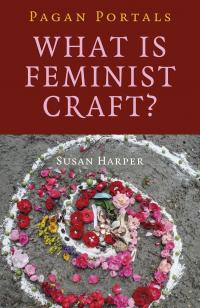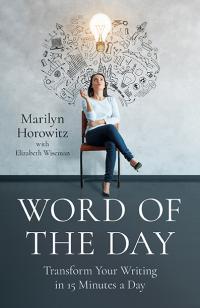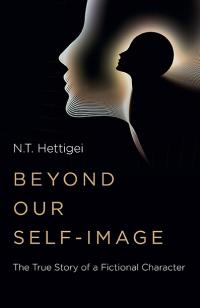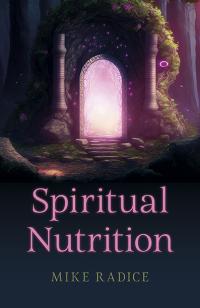
Chapter 8 Literature, Popculture, and Fairies: Queens in a New Age
Thus far we’ve looked at the Fairy Queens in Scottish folklore and several of the named Queens in Irish folklore. These are the Fairy Queens of history and of daily belief who people have been acknowledging for unknown amounts of time. Now as we proceed into this chapter we will be plunging into murkier waters as we enter into the realm of Fairy Queens found primarily in literature or popular culture; their historicity is often uncertain although certainly there are people today who connect to them and honour them.
Unlike previous sections this time we will not be focusing on a single being but rather this will be an overview of a variety of Fairy Queens made famous by literary works and pop-culture. Often their roots before they appeared in the fiction that made them famous are unclear and while in some cases we may surmise they represented older folkloric figures we simply do not know. They are, in many ways, enigmas yet people do honour them and find powerful connections to them.
There will also be no guided meditation in this chapter, although at this point if you feel inclined to try to meet any of the Queens included here you should be able to adapt the previously included format for yourself for any one of them.
Thus far we have taken in-depth looks at Queens who appear in folklore; now we want to shift to look at the way that Queens have been portrayed by those who may or may not believe in their actual existence in fiction and literature. All of these aspects of the Fairy Queens are important to understand and add to the larger view of who and what the Fairy Queens are and how human beings relate to them.
[caption id="attachment_6193" align="alignnone" width="498"] The Quarrel of Oberon and Titania, by Joseph
Noel Paton, c. 1849[/caption]
The Quarrel of Oberon and Titania, by Joseph
Noel Paton, c. 1849[/caption]
Literary Queens: Mab, Titania, Morgen la Fey and Gloriana
Shakespeare’s Fairy Queens: Mab and Titinaia
Queen Mab is a figure who first appears in Shakespeare’s play ‘Romeo and Juliet’ written in the late 1590’s. Briggs suggests that the character of Mab, although along the lines of an insect-like
fairy, may have been influenced by Celtic folklore and by existing figures such as the Irish Queen Meave (Briggs, 1976). Mab is not a character in the play itself but is rather only referenced by
Mercutio in a long speech he gives on the subject of dreams. He describes Queen Mab as a midwife of the fairies, as tiny as the stone in a ring, who travels at night in the half shell of a hazelnut
turned into a wagon and pulled by atoms (Shakespeare, 1983). Mercutio credits Mab with bringing dreams both good and ill and also with matting the hair of horses and of lazy people into elflocks1
(Shakespeare, 1983). During the two centuries after Shakespeare wrote of her Mab appeared in other literature as the Queen of fairies, either of all fairies or particularly of the tiny ones (Briggs,
1976). Mab appears in later literary works as well, seemingly inspired by Shakespeare’s character, notably a dream sequence in Melville’s ‘Moby Dick’ is named for her and she appears in a story by JM
Barrie where she grants a wish to Peter Pan.
Rather oddly given her literary roots as a midwife, bringer of dreams, and punisher of the lazy in modern fiction she has repeatedly taken the role of villain, influencing how some people today may perceive her. In several novels she is said it be the queen of the Unseelie Court, including Jim Butcher’s Dresden Files and Julie Kagawa’s Iron Fey series. In the television show True Blood she is an ambiguous figure and she appears as a villain in the comic book ‘Hellboy’.
Titania
Titania is a Fairy Queen who appears as an important character in Shakespeare’s play ‘A Midsummer Night’s Dream’ written in the mid 1590’s. In the play she is the wife of the Fairy King Oberon and
the two are fighting over a changeling child; because of the fight Titania is refusing her husband’s company and so he sets one of his servants out to make her fall in love with a foolish mortal as a
punishment (Shakespeare, 2004). Briggs connects Titania’s name to that of the goddess Diana, suggesting that Titania was meant to be an epithet for the well-known goddess (Briggs, 1976). Diana is
often associated by early modern writers with both fairies and witches so there is a certain logic to this idea. Titania’s name is not widely seen elsewhere in literature although it does appear one
magical text found in the British Museum (Briggs, 1976).
Titania appears in a handful of works after Shakespeare, usually paired with Oberon or as a minor character; examples include a reference to her in Faust I and in an opera titled ‘Oberon, or the Elf King’s Oath’. Unlike Mab, Shakespeare’s Titania did not find widespread popularity in modern culture although she does either appear or is referenced in some video games and literature. Perhaps her most high profile modern appearance would be as the Summer Court Queen in the Dresden Files books, although she does also appear as the Queen of the Black court in Dana Marie Bell’s Grey Court series.
Arthurian Fairy Queen: Morgen la Fey2
Morgen le Fay is a character first found in Arthurian stories, specifically the 12th century works of Geoffrey of Monmouth, where her name was initially spelled Morgen le Fay. This is a man’s name
and seems to have been a confusion by the people writing the stories from whatever the original Welsh name may have been; the 12th century Morgen would have been pronounced, roughly, 'Mor-YEN'
(Jones, 1997). The name Morgen is generally believed to mean 'sea born'. Interestingly morgens are a kind of Welsh water fairy roughly similar to a male mermaid (Briggs, 1976).
Geoffrey was collecting local stories from Wales and publishing them in France and while he certainly didn't invent Morgen for his Viti Merlini there is no way to know for certain how much or little he shaped the character as he preserved her; which in fairness is true for all of the Arthurian characters he wrote about. That aside however Geoffrey's Morgen was a priestess, one of nine sisters connected to Avalon. In the 15th century Morgen would be renamed Morgan by Thomas Malory and recast as King Arthur's scheming half-sister who was set against both Arthur and his wife Guinevere. Her epithet ‘la Fey’ means ‘the fey’ and may either connect her to the fey folk or imply her role as a sorceress as both readings are viable.
Morgen is connected to healing and, perhaps, to guiding the dead or dying to Avalon/the Otherworld. She is also strongly associated with magic, enchantment and in some cases with deception. Her role even in Arthurian mythology is complex and she is viewed in some stories as a wise and ambiguous Otherworldly figure while other stories paint her as devious and dangerous.
In modern material her character is no less complex and she may be viewed by one source as a goddess, by another as a human character, and by a third as a Fairy Queen. She has been immensely popular over the years both in Arthurian re-tellings as well as in fairy-themed fiction and she may appear in these works in a variety of different guises, sometimes good and sometimes evil. There are hundreds of new Arthurian novels where Morgan can be found and it would be beyond the scope of this work to list them here. Outside of Arthurian stories she is a popular Fairy Queen as well, appearing in such works as Galenorn’s ‘Otherworld’ as a half-fairy Queen, and as an antagonist in Green’s Nightside series. We see her in episodes of the television shows the Librarians and Star Gate SG-1, and in the movie The Sorcerer’s Apprentice, as well as in various video games.
Spencer’s Faery Queene: Gloriana
Gloriana is a driving character of Spencer’s late 16th century work, possibly representing perfection and order, as it is she who assigns the characters their quests choosing the ideal task for each
one. These quests may also be telling as they represent a drive to restore order where chaos has been loosed; one knight must find and capture someone connected to a murder who is stirring strife and
another must capture a dangerous beast with “a thousand contentious tongues” (Erickson, 1996). Gloriana is generally understood as symbolic representation of England’s Queen Elizabeth and Fairy
itself as seen as parallel to Elizabethan England and in the poem the two act as mirrors to each other.
Gloriana is an unusual Queen by many measures, ruling over a largely chaotic and lawless Fairy where her power seems limited to directing a handful of knights in a drive to bring perfection to chaos (Erickson, 1996). Her court is held in Fairy’s only city, Cleopolis, which also serves as a goal for many characters in the poem to reach. Gloriana’s Fairyland occupies a liminal place between Heaven, Hell, and mortal earth, yet is also separate from various other divine realms mentioned, making both its location and nature difficult to pin down, and is as much allegory as folklore (Erickson, 1996). Her realm is also in many ways a representation of imagination itself rather than intended to describe an actual fairy realm and no matter how much good is accomplished by her knights ultimately nothing changes.
The 1978 novel ‘Gloriana, or the Unfulfilled Queen’ is styled along the same lines as Spenser’s work and uses allegory to retell the rule of Queen Elizabeth of England, using Gloriana as a main character, the ruler of a fictional land. Gloriana appears as the Queen of the White Court in Dana Marie Bell’s ‘Grey Court’ series. In those books she is a difficult character who uphold an ideal of perfection that is often harmful to those she rules over. There is also an episode of the historic drama ‘The Crown’ titled Gloriana.
Pop-culture Fairy Queens: The Queens in Modern Writing
Fairy Queens are often featured in modern works of fiction, although without grounding in the older source material. We have touched on a few of these as we looked at the specific literary Queens,
but here we can take a better look at two examples of how these popular culture appearances play out.
Jim Butcher’s Dresden Files series of novels has a complex monarchy system, wherein each of the two Courts, summer and winter, are ruled by a ‘Mother’, Queen, and Lady. The two ‘Mothers’ are never
named beyond their titles. The Summer Queen is Titania; the Winter Queen is Mab. The summer Lady is initially Aurora, but she is killed during one of the books. The winter Lady is Meave. We can
safely conclude form this, I think, that Butcher was drawing largely on Shakespeare for his Fairy Queens, although it is a bit of a question why he chose Mab as the Queen of the Winter Court.
In Dana Marie Bell’s Grey Court series Fairy has three Courts. The White Court, which is viewed as the ‘good’ court is ruled by Gloriana who seeks purity and perfection among her people, rejecting
anything and anyone who is perceived as less than ideal. The Grey Court is ruled by Oberon, the most powerful of the three rulers, and the Grey is a neutral court that takes in anyone; it is neither
good nor evil. The Black Court is ruled by Oberon’s ex-wife Titania and is the ‘bad’ court, filled with the monsters of Fairy. Like Butcher Bell was looking at the older literary Queens for
inspiration, blending Shakespeare and Spenser together for her world.
In Butcher’s writing Titania leads what may nominally be described as the ‘good’ fairies of the Summer court; in Bell’s books Titania is the Queen of the dangerous fairies. Butcher assigns that role to Mab, while Bell envisions Gloriana as the Queen of the good fairies (although good in this context may be debatable). In both examples we see the author using literary queens as a springboard for their imagination to create new versions of Fairy Queens that fit the needs of their specific plots. The historic literary Queens are re-envisioned and given new lives and personalities, sometimes recreated entirely with only the name remaining the same. Modern fiction is much more accessible and relatable for many pagans today and offers a way for people to access the Fair Queens that older literature may not. The Gloriana of modern fiction is easier to understand and feel connected to than the aloof character of Spenser’s poem.
If we were to look at any of the other books or shows mentioned we would find the same thing, and this is important for those of us seeking to find the Fairy Queens in the modern world. For many people their introduction to the Queens doesn’t come through folklore or literature but through fiction in some form, and this must be respected and also understood in context. Just like Marvel Comic’s Thor isn’t the same as the actual Norse god but can help people take those first steps to meeting him, the fictional Queens should be understood as characters rather than Otherworldly beings. But that doesn’t mean those beings don’t exist and can’t be worked with – we must just work to unwind them from the layers of modern fictional backstory to find their true core.
If any of the literary Fairy queens appeal to you as a Queen you want to work with or connect to, I suggest reading their oldest source material. Study their journey in literature and modern fiction. Look at the way their story has changed over time and the different ways they are understood in their own contexts. What characteristics are assigned to them? Are they usually viewed as helpful or dangerous? What are they considered the Queen of? What could their roots in folklore be? There may be no clear answers to these questions but the journey to answer them, like the quests Gloriana assigned her knights, will help you to travel further on your own spiritual path and to gain a deeper understanding of that Fairy Queen.
1 Elflocks are unexplained tangles or mats that appear in the hair of people or animals overnight, believed to be a sign of fairy anger with the person or madness. Combing them out is seen as very
unlucky. In many cases they might be cut out and the person would sleep with iron to ward off any further fairy activity.
2 I am aware that in modern terms her name is often given now as Morgan la Fey however I am choosing to go with the older original spelling used by the first person to write her name down.
References
Jones, H., (1997) Concerning the Names Morgan, Morgana, Morgaine, Muirghein, Morrigan and the Like. Retrieved from https://medievalscotland.org/problem/names/morgan.shtml
Morgan la Fay (2018) The Camelot Project; University of Rochester. Retrieved from http://www.kingarthursknights.com/others/morganlefay.asp
Briggs, K., (1976) A Dictionary of Fairies
Shakespeare, W., (1983) Romeo and Juliet
--- (2004) A Midsummer Night’s Dream
Erickson, W., (1996) Mapping the Faerie Queene: Quest Structure and the World of the Poem
Categories:
0 comments on this article






